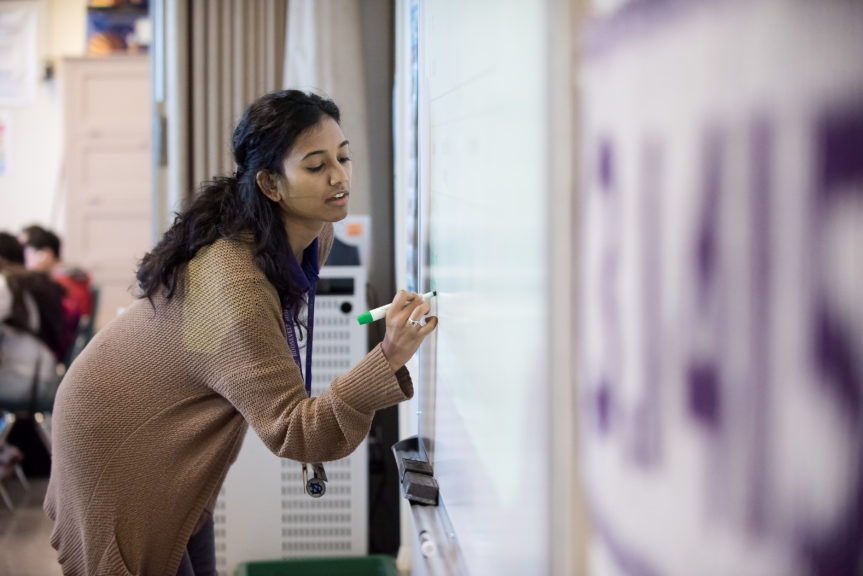“Dream what?” the teacher prompted, “Dream Big!” was the enthusiastic response, little arms wiggling in the air. Another great school visit in Oakland, to a community that is starting with a mission of creating community leaders and re-envisioning how school should be structured to support students not only in passing a test but developing as leaders.
And while the headlines on Roosevelt have focused on its outstanding academic results in math, the real story is about a school community working together to make school relevant and meaningful for students. This may be a longer route to test success, but it’s built on a strong foundation—the people themselves and a set of processes that give them ownership over the program.
Blow up the factory model
The traditional model of schooling—the factory model—is not working. Or at least it’s not working for many children. This idea that we group kids by age, put 30 of them in a room in rows, where they are expected to sit basically silently and be taught to by a lecturing teacher for a series of disconnected 50 minute periods.
It’s a hard model to break from, because most of us experienced it for over a decade, and it forms a silent backdrop to most of our thinking. A model that we often fall back to.
Not at Roosevelt. Early on the visit the principal talked about “blowing up the factory model” and slowly and surely the explosive charges are being planted, in math, the overall curricular design, and increasingly in English Language Arts.
Teaching to One
The factory model teaches to 30 or nobody depending how you think about it. It’s usually a lecture aimed at the middle swath of learners with some differentiation, but probably missing a whole set of learners who are advanced, and another set that may be behind.
But the lesson is the lesson and we are all learning it together.
Teach to One is a model of teaching math from NYC that reviews student work on a daily basis and plans the next day’s lessons based on that review, grouping students based on needs and varying the modalities that they learn and practice skills.
This is different work for students and staff, and while it presented challenges, both the kids and adults I spoke to preferred this to the old way.
Outstanding results in Math
Roosevelt had the most improved math scores of any public middle school in Oakland, charter or district. According to OUSD’s press release,
The math scores at Roosevelt have already improved more than nearly any other middle school in Oakland, including both District and charter schools. Teach to One uses an innovative approach that assesses each student to determine the instruction method that works best for them. The program then assigns each student a blend of teaching such as teacher-led instruction and student collaboration, virtual tutoring and interactive math software.
These results aren’t based just on the math program, there are strong committed, and thoughtful staff, that are making this program work. I would encourage folks to take a look at their published school design plan for more information.
Next steps
While the Teach to One program is Math based, Roosevelt’s leadership has embraced the overall philosophy and is moving it beyond Math, truly working to personalize education in other subjects.
And something is clearly working in the school. Students were engaged, seemed generally happy, and were learning. Same with staff.
I really wish more people would actually get out and into Oakland’s schools. We hear a lot of stories about how things are, and often how bad things are. But the more I get out into schools and talk to our youth and educators, I am continually impressed. Not by the shiny buzzwords of reform or slick PR campaigns, but by the real work, and authentic learning.
Big dreams are too often reserved for the Hills, it’s great to see Flatlands schools not only talking the talk but walking the walk with our kids.

